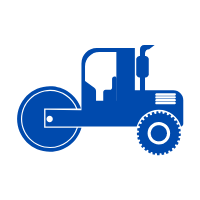If your parking lot is looking worse for wear, you may not have to replace it. An asphalt overlay provides a new, undamaged surface, but saves time and money as the original base and lower course of asphalt can be reused.
1. Surface Milling
The top layer of the asphalt must be ground away, which is called milling. Surface milling creates a roughened surface that the new asphalt can bond with more thoroughly. It also creates space for the fresh asphalt layer so that it will still be level with the surrounding curbing and gutters. Milling removes the damaged surface layer of the asphalt, and it may uncover deeper damages that will require some repairs.
2. Base Patching
Any damage that extends deeper than the asphalt that is milled away will require patching. Potholes are the most obvious example of deep damage, as are weak areas with deep cracks. The entire damaged area of asphalt will be cut out and an asphalt patch will be installed to bring the area to the level of the milled surface. If the base is compromised at the point of damage, then it may need to be built up and compacted before the base patch can be applied.
3. Tack Coat
Milling and base patching will leave a lot of loose aggregate and dust on the surface, which must be cleaned up. A sweeper cleans up the residue so that the next layer, the tack coat, can be applied. The tack coat is essentially an asphalt binder, which acts like an adhesive to better help the new overlay layer bond thoroughly with the layer of original asphalt below.
4. Leveling Course
Following the tack coat comes the first course of asphalt. It's called the leveling course because it is used to level out any issues in the asphalt. For example, settling of the pavement over the years can result in low dips where water collects and eventually leads to pothole formation. The leveling course creates a consistent grade that is better able to drain water into the surrounding gutters or storm drains.
5. Surface Layer
The final course is the surface layer of the overlay. This creates the final smooth, consistent layer. The paving will be off-limits for regular traffic for a couple of days, although the crew can usually access the lot after 24 hours to put down striping and any other finishing touches.
Contact a paving contractor if you would like to learn more about asphalt overlays.
Share
